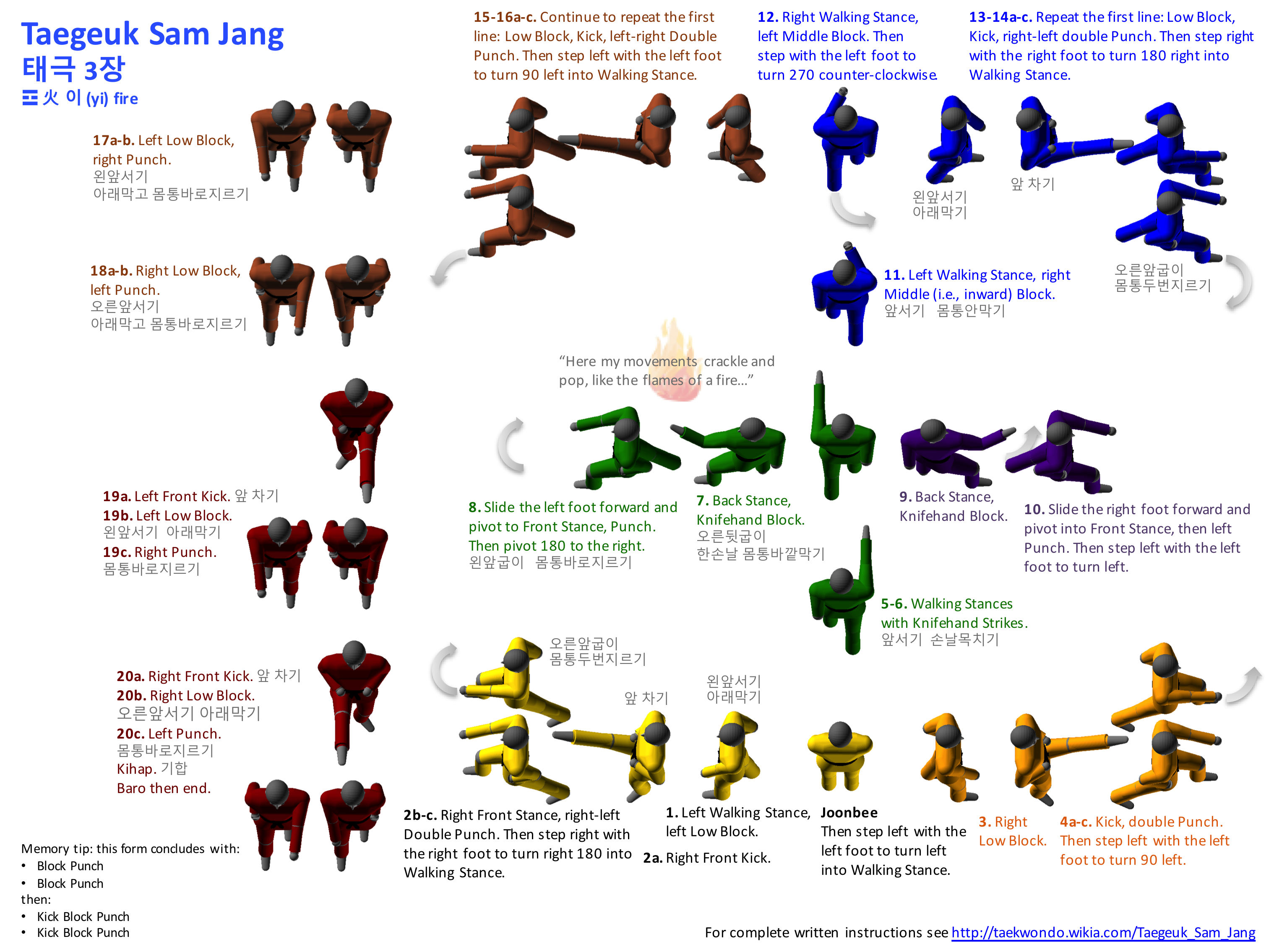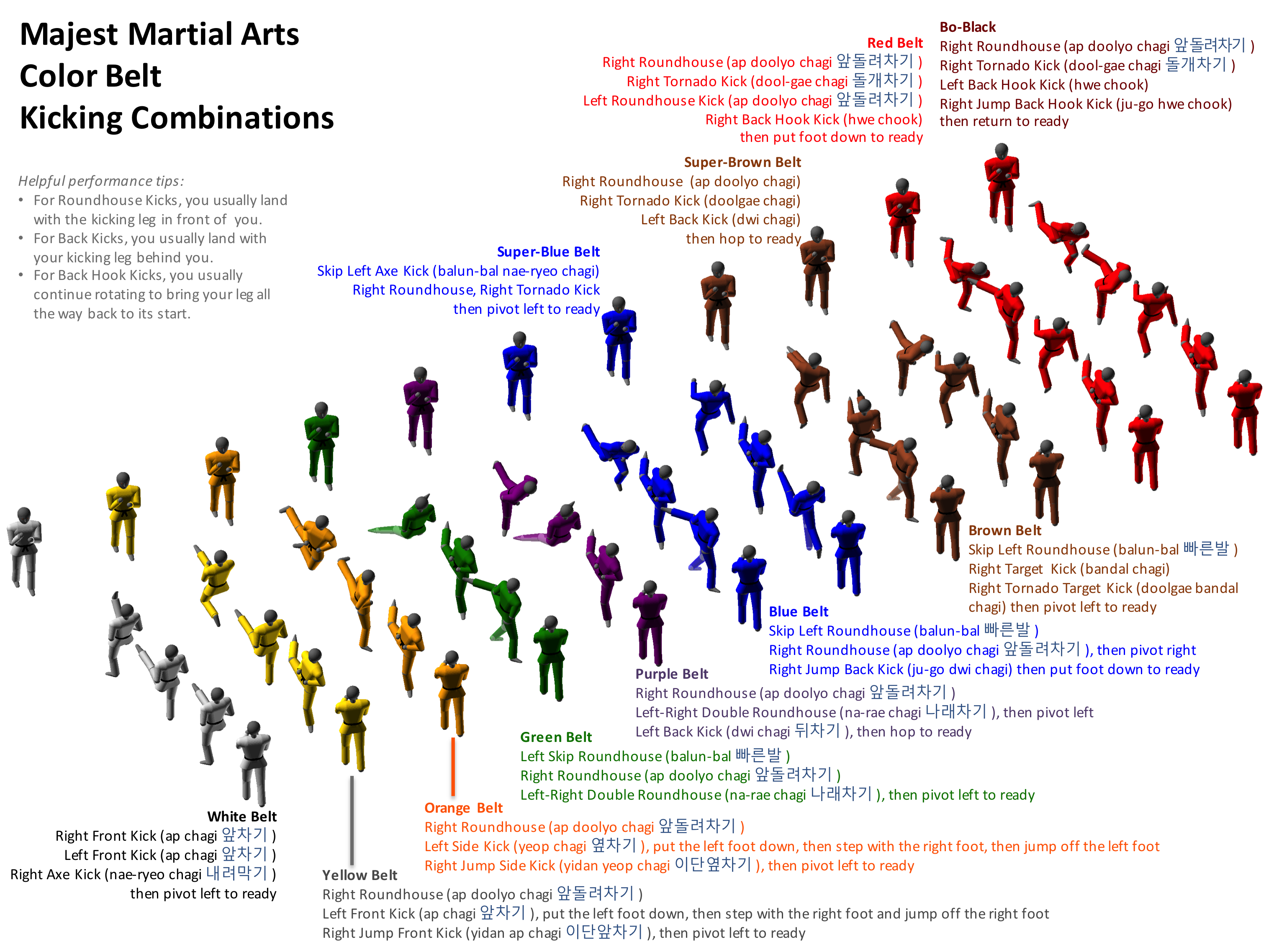Blue Belt Curriculum
Majest Martial ArtsAt Blue Belt (5th gup), the Majest student is about halfway through their journey to Black Belt (1st dan). Fifth gup students at Majest practice the form Taegeuk Sam Jang. The trigram for this poomsae (☲) represents “fire”, and you can see this in the way the movements of this form “crackle and pop” like fire. Where previous forms relied primarily on single movements, this form now places a greater emphasis on combinations – two or more movements combined into a single step. The fact that the trigram for this poomsae has a broken-line in the middle shows us that the major turn on the second line of the form will be a simple pivot, rather than a full turn using the lead foot.
The form starts right away with combinations, as seen by the double-punch combination on the first line. For the first time, this form also introduces knifehands. Steps 5 and 6 introduce the Knifehand Neck Strike (sonnal mok chigi), and steps 7 and 9 introduce the Single Knifehand Outside Block (sonnal bakkat makgi). The videos below demonstrate this form, as well as the Majest kicking combination and breaking-technique for Blue Belt students. For additional information about this form, see also Taegeuk Sam Jang.
5th gup - Blue Belt, Taegeuk Sam (step by step)
5th gup - Blue Belt, Taegeuk Sam (with written instructions)
5th gup - Blue Belt, Taegeuk Sam Jang
5th gup - Blue Belt breaking
At Majest, the Blue Belt breaking technique is the Back Kick (dwi chagi) sometimes also called a Horse Kick or a Mule Kick because it is reminiscent of how a horse or mule kicks backwards with their hind legs. When done well, it’s one of the strongest kicks in TaeKwonDo. After performing a Back Kick, the kicking leg should land behind the student, due to the force of the kick.
5th gup - Blue Belt kicking combination
The Blue Belt kicking combination starts with a Skip Roundhouse (“balun bal”) with the left leg, then a Roundhouse Kick with the right leg. The student puts down the right leg, then pivots clockwise to a Jump Back Kick with the right leg, then puts the foot down to the rear to return to ready.
5th gup - How Parents Can Help
As your child practices Teageuk Sam Jang at home, here are some to watch for:
- As with previous belt colors, make sure your child is chambering for the blocks properly.
- As with the previous form, Teageuk Yi Jang, this form has a trick “kick-and-punch” style ending. In this case, it’s even more complicated: “kick-block-punch”. As with the previous form, ideally the student should be able to avoid “falling” into the block-and-punch; instead, the student should be able to maintain their balance while kicking, even pause on one leg after the kick if they chose to do so, and then land gracefully into the Walking Stance for the block-and-punch. In practice, this is difficult! It could take months of practice to get this right — but it’s a great combination to practice at home to improve balance. Watch the step-by-step video above to see how it’s done.
- As with the Orange Belt form, this poomsae includes an Outside Block, this time performed with a Knifehand. As with the previous Outside Block, the correct motion for the blocking arm is to start at the opposite waist, rise straight UP first to the shoulder, then arc around to the blocking position. We sometimes tell students that they should be able to “smell their hand” as their hand moves to the blocking position, since it travels just under their nose in its arc. A common mistake is that students will simply move the blocking hand in a straight-line from the waist to the blocking position — with no arc. This is another terrific thing to practice at home: the correct motion of the Outside Block.











